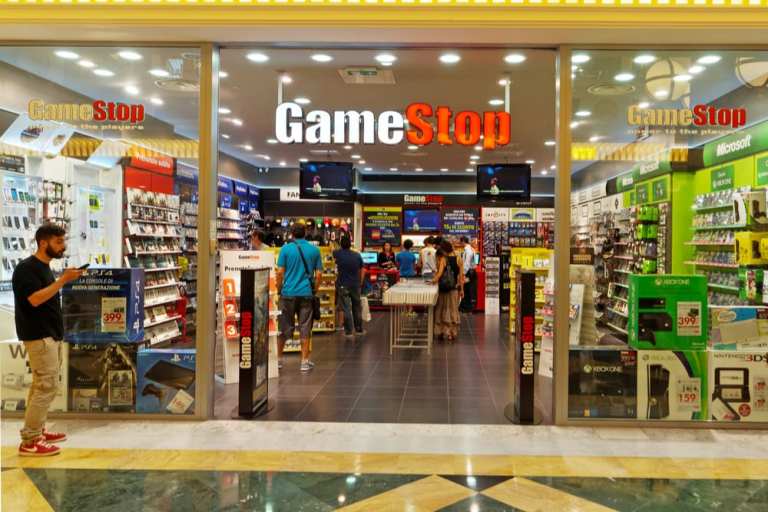Video Games Provide Fresh Fuel For Retail Innovation

The rise of video games, both online and mobile, is helping to drive innovation in retail. That includes stores, and the latest example comes from GameStop Corp.
In a statement, the company said it had “announced a strategic partnership with global innovation design firm R/GA to strengthen its focus on creating unique in-store experiences as part of its strategic move in reaffirming its place in the video gaming culture.”
More specifically, that means Game Stop R/GA is “developing and piloting new and streamlined physical store concepts, introducing new ways for gamers to try new titles before they buy them and giving stores a unique layout and purpose that appeals to gamers. From store concepts that offer competitive sessions in home-grown e-Leagues to locations that sell strictly retro gaming software and hardware, GameStop will pilot the new store concepts in a select market to present something new to players both old and new, [who are] searching for experiences in gaming beyond the console.”
Larger Trends
This is only part of the innovation trend stemming from video games.
Tilly’s, a Southern California-based apparel and accessories retailer with a particular focus on teenage customers, is hoping to tap into the trend via a partnership with the High School Esports League (HSEL), which connects more than 1,500 virtual high school sports clubs across North America.
The move is one of several Tilly’s has been pursuing recently to draw additional foot traffic in an era when, like many youth-focused retailers, it is seeing its sales constantly shifting online.
Augmented reality gaming has been a particular area of focus for Tilly’s, which has been partnering with AR developer Zappar since 2017 on a mobile-based, AR-centric campaign centered on increasing app downloads and driving store traffic. In 2017, for example, the two collaborated on an in-store scavenger hunt with YouTube influencer Shonduras that allowed shoppers to use the retailer’s app to collect virtual coins and redeem them for prizes and discounts.
In-store sales, notably, is where the retailer needs to see growth. Consumers are buying Tilly’s products online, as digital growth was up 22 percent in 2018. But in-store sales didn’t fare as well – there was growth, but at 1.4 percent, it wasn’t as much as the retailer wanted to see.
But building a digital gaming experience into a physical shopping journey could bring customers in, and might just add a lot of apps to phones – so, if nothing else, Tilly’s can keep expanding those digital sales.
More Money
As that happens, video games continue to attract big money, which will lead to more retail innovation.
Apple, aiming to move beyond the iPhone to drive sales, is reportedly spending millions of dollars to acquire new video games to be part of the subscription gaming service it will roll out later this year.
According to the Financial Times, citing several people familiar with the deals, the fact that Apple is spending so much money shows developers it is serious about the new Arcade game subscription service. The big price tag to acquire new video games also highlights the fierce competition to land exclusive rights to top content. Apple has stiff rivals in the gaming market. Google and Tencent – as well as Nintendo, Sony and Microsoft – are operating in the same area.
The sources told the Financial Times that Apple is spending several million dollars on each of the more than 100 games Arcade will have when it launches later in 2019. The budget for the games is expected to surpass $500 million. In 2017, Apple spent $1 billion on original content for its TV platform. If developers agree to list their games exclusively on Apple, they get more of an incentive, noted the report. After the games are exclusive on Apple Arcade for a few months, developers will be able to release their games to other game consoles and for the PC.
Whether online, mobile or inside stores, video games are providing fuel for retail innovation.

